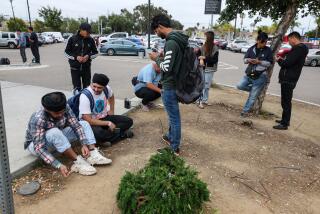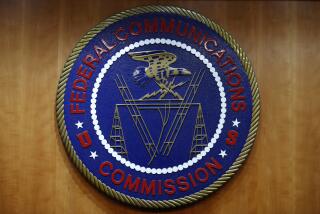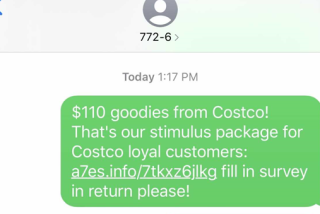FCC OKs Cell Phones With New 911 Link
- Share via
WASHINGTON — A new way of linking satellites and cellular phones in an emergency--or perhaps finding a place for dinner--got a big boost Wednesday from the Federal Communications Commission.
By a 5-0 vote, the commission allowed the introduction of cell phones that use global positioning system satellites to automatically flash their locations to 911 operators.
Promoters of the link say it has two-way applications, and people who buy the new phones will also be able to get such services as directions when they are lost and information on finding food and lodging in a strange town--practically anywhere.
About 70,000 callers use their cell phones to reach 911 each day, but many don’t know exactly where they are calling from. Three years ago, the FCC set a 2001 deadline for service providers to devise a system that would allow 911 operators to automatically pinpoint callers’ locations, as they do with calls from conventional phones.
An unforeseen consequence of the FCC decision was to favor a technology then considered cutting edge but is now being challenged. The commission had originally required cell phone companies to automatically provide a location for all “e-911” calls by 2001. Sounds logical, right?
Wrong. By stressing access for all phones, the FCC effectively confined companies to a network solution that relied on equipment deployed on cell towers to determine a signal’s location but that was dependent on handsets that had no capability to use the GPS to signal their location.
Wednesday’s action will allow competition between the network solution and one based on satellite technology.
FCC Chairman Bill Kennard said the decision will help save lives, getting aid to callers more quickly. It will also allow the agency to remain neutral and let the market determine which technology is preferable.
“Today’s action will hasten the day when victims of car accidents and those stranded in hurricanes can get help sooner,” Kennard said.
An FCC official, who asked not to be named, said there are pros and cons to both systems.
The original network solution would accommodate all 70 million cell phones now on the market in the U.S. and could be in place more quickly. However, the official said it would be costly to install in low volume areas, such as the countryside.
The satellite solution is less expensive and has been shown to provide a more accurate location in early testing, said the official. However, its effectiveness can be hampered if satellite visibility is obscured by buildings or other obstacles. The GPS option would also require people to get new handsets, but about one-quarter of all cell phones are replaced every year anyway.
The FCC set a schedule Wednesday so service providers who choose the GPS option do not lag far behind. They would have to begin offering the new handsets in 2001, and 95% of their customers would have to have them by October 2002.
“To some extent, we don’t care which technology wins,” said the official. “What we want is the public-safety benefit. There could be mixes of both.”
Mike Amarosa, a spokesman for King of Prussia, Pa.-based TruePosition Inc., which makes the network system, said his company welcomes the competition. “We can deal with the phones that are out there today and we would be able to deal with [GPS] phones as well,” Amarosa said. “We can go up very quickly.”
Stephen Poizner, president of SnapTrack Inc., a Silicon Valley firm marketing the GPS approach, said he believes its accuracy will drive sales. The handsets will also have a button allowing users to turn off the tracking feature except when calling 911.
But Poizner sees the potential for a multibillion-dollar global market based on piggybacking travelers’ services on the 911 lifeline.
Travelers could use their GPS link to get directions to their destination or assistance in finding the nearest Starbucks or Home Depot. With the network solution, consumers could get those services too, but through a membership association.
“You could hit a button and know where you are,” Poizner said. “If you really want to go to an Italian restaurant, you could call up and say, ‘Tell me how to get to the nearest Italian food.’ ”
Of course, there’s no guarantee the pasta would be good.
More to Read
Inside the business of entertainment
The Wide Shot brings you news, analysis and insights on everything from streaming wars to production — and what it all means for the future.
You may occasionally receive promotional content from the Los Angeles Times.










